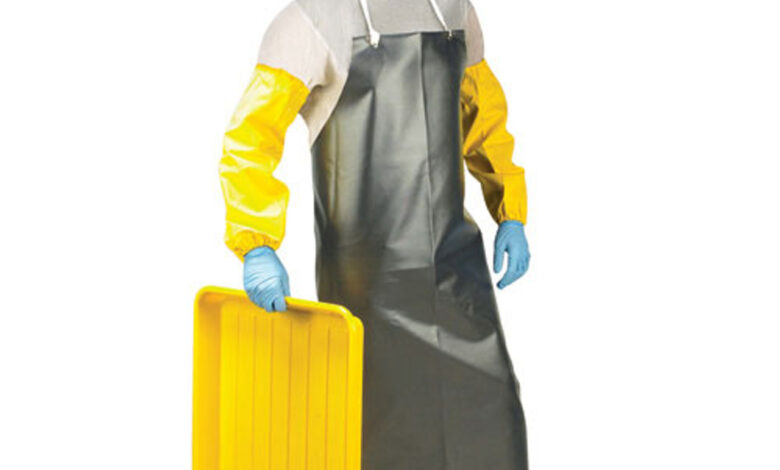Protective Apron: Your Ultimate Guide to Safety and Efficiency
Protective Apron: Your Ultimate Guide to Safety and Efficiency

Introduction
Due to the fact they provide important safety towards risks, shielding aprons are critical system in many sectors. Whether or not you figure within the scientific region, the enterprise international, the culinary arts, or the humanities and crafts, knowing the value and uses of protecting aprons can improve productivity and safety while doing each day chores.
A protective Apron: what’s It?
Sporting a protecting apron over regular garments can protect the wearer from capacity hazards like spills, chemicals, heat, or infection. These aprons ensure the wearer’s safety and hygiene because they’re constructed of different substances that are designed to satisfy character needs.
History of Protective Aprons
Easy leather or fabric aprons were employed as safety in early civilizations, and that is in which the history of protective apron begins. That allows you to meet the growing needs of efficiency and protection in diverse industries, sophisticated era and materials had been protected into the designs and substances through the years.
Kinds of Covert Apparel
Lead Aprons
The medical industry, particularly radiography, is the main application for lead aprons. They safeguard patients and medical personnel from radiation exposure during imaging procedures.
Rubber Aprons
In industrial and laboratory environments, rubber aprons are standard equipment. They provide defense against burns and pollution from chemicals, acids, and other dangerous substances.
Throwaway Apron
Healthcare facilities and the food area each make tremendous use of disposable aprons. A good way to save you move-infection, they are made for single use and provide a hygienic barrier.
Leather Aprons
Leather work aprons are used in fields like blacksmithing and welding. They provide longevity and safety by providing superior defense against heat, sparks, and physical abrasions.
Protective aprons’ uses
Medical Field
Protective apron are essential in the medical industry. They guarantee a hygienic and safe workplace by shielding medical staff from radiation, body fluids, and other impurities.
Industrial Use
Industrial workers frequently operate in dangerous environments. Protective apron are necessary in factories, labs, and building sites because they offer a barrier against heat, chemicals, and physical harm.
Culinary Purposes
Apron use is a hygienic precaution against hot spills, stains, and sharp items for chefs and kitchen workers. They contribute to maintaining a hygienic and secure kitchen.
Crafts and Art
Apron use is a common practice among artists and craftspeople to shield their clothes from materials like paint and glue. This guarantees a clean workstation and frees up creativity without having to worry about stains.
Advantages of Wearing Safety Wear
Safety
The main advantage of wearing protective apron is increased safety. They lower the chance of accidents and injuries by acting as a barrier against different threats.
Hygiene
Prtective aprons keep surfaces clean and prevent contamination in settings where hygiene is important, such food service and healthcare.
Durability
Reliability and long-term use are guaranteed by the sturdy materials used to make high-quality prtective aprons.
Components of Protective Aprons
Lead
Radiation-prtective aprons are made from lead. It is essential to medical imaging because of its density, which filters dangerous radiation.
Rubber
Rubber aprons provide advanced safety in industrial and laboratory environments because they’re resistant to acids and chemical compounds.
Plastic
Frequently thrown away, plastic aprons provide a lightweight, water resistant barrier this is perfect for hygiene desires in the food and medical sectors.
Leather
Leather is good for heavy-responsibility welding and blacksmithing jobs because it offers strong protection towards warmness and bodily abrasions.
Selecting the Ideal Apron for Protection
Assessing Your Needs
To select an apron that delivers the right amount of protection, determine the exact threats you experience at work.
Quality and Certification
Ensure the apron meets industry standards and certifications, guaranteeing its effectiveness and reliability.
Comfort and Fit
An apron that fits properly and is comfortable will allow for extended usage without discomfort and freedom of movement.
Upkeep and Scenario
Cleaning
To maintain the apron’s hygienic features and protecting qualities, ordinary cleaning is required. For cleaning, adhere to the manufacturer’s suggestions.
Storage
Your apron’s lifespan is increased by proper storage. It should be kept out of direct sunlight and chemicals in a dry, clean environment.
Continual Exams
Check for wear and tear on your apron on a regular basis. If you see any damage that would impair its ability to protect, replace it.
Innovations in Protective Aprons
Advanced Materials
Contemporary aprons are constructed from superior materials that provide enhanced comfort, protection, and longevity. These materials improve the functionality of the apron by being robust and lightweight.
Comfortable Designs
Because ergonomic designs make aprons comfortable to wear for extended periods of time, they lessen strain and boost productivity.
Conclusion
In many sectors, protective apron are an essential part of safety equipment. Gaining knowledge about their kinds, applications, advantages, and appropriate upkeep can greatly improve workplace efficiency and safety. For the best protection, always select the appropriate apron for your purposes and make sure it satisfies quality criteria.



